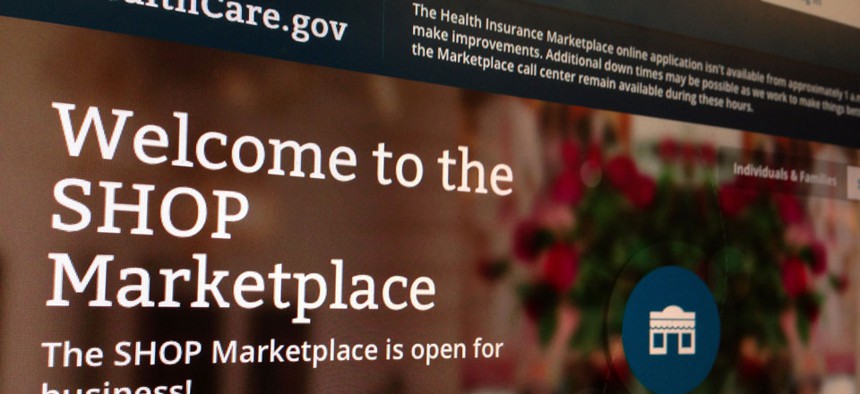HealthCare.gov Performs Well After Making White House’s Repair Deadline

Jon Elswick/AP
Engineers have put many insurance seekers in an online queue to avoid overwhelming the site.
The Obama administration’s once barely functioning online health insurance marketplace performed solidly on Monday, the first weekday after a White House deadline for the site to be vastly improved, but the site had to keep some insurance seekers waiting to lower the overall volume of visitors.
About 375,000 people visited HealthCare.gov between midnight and noon on Monday, according to metrics provided by the Health and Human Services Department. That half-day figure suggests that the site could effectively serve 800,000 daily visitors, the capacity officials estimated it would be able to handle by Dec. 1.
When the site originally launched on Oct. 1 visitors suffered long wait times and frequent error messages, preventing the vast majority from enrolling in an insurance plan. Obama pledged to fix those errors in time for a series of deadlines mandated by his health care overhaul. A team led by contractor QSSI has been working for the past six weeks to clean out software bugs and add server capacity.
To prevent applicants from overwhelming the site, designers added a queuing system that keeps new shoppers out once the site has reached capacity. Officials implemented the queuing system around 10 a.m. Monday when response times were averaging more than 2 seconds and error rates were approaching 1 percent, officials said.
Several users reported being placed in the queuing system on social media and two Nextgov visits to the site after noon both resulted in being placed in a queue. The queuing alert offers to email visitors when they can return to the site.
Despite HealthCare.gov’s solid performance Monday, it's not yet clear whether the site will be able to handle the large volume of visitors officials expect to come throughout December as the first deadlines to purchase health insurance approach.
Some experts fear the site’s poor performance during its first two months will push younger and healthier consumers to pay a penalty rather than purchase insurance through the site, raising the cost of premiums for people who do enroll in the program to an unsustainable level.
NEXT STORY: Three more China observations



